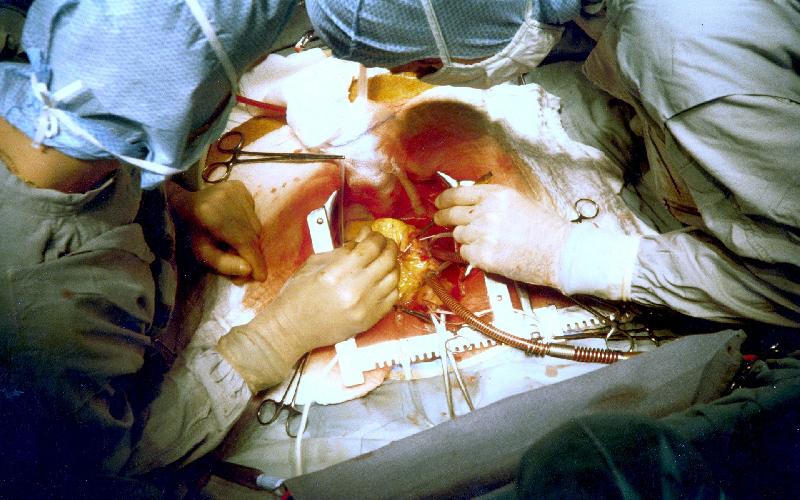Graft Types Used in Coronary Bypass Surgery


This article brings to life a detailed perspective on types of grafts used in Coronary artery Bypass Graft (CABG) also known as Bypass surgery.
Coronary Bypass surgery also known as (CABG) coronary artery bypass graft is a surgical procedure in which veins or arteries from different parts of the body of a patient are grafted to form a bypass or route to the blocked artery which improve the supply of blood to the heart. Coronary bypass surgery is required when debris of unwanted fat, cholesterol and other substances which form plaque build up in the inner walls of arteries narrowing or hardening them leading to forming blocks. A coronary bypass surgery helps a great deal to minimize the risk of death through coronary heart diseases such as heart attack. The number of bypass surgeries is determined by the number of blocked arteries.
A bypass surgery depends on the size of the coronary artery, the number of blocks and the different locations of the blockage. A surgeon takes a call on which bypass grafts need to be used from the types of bypass grafts. In most cases it’s the (ITA) internal thoracic arteries or (IMA) internal mammary arteries which are commonly used bypass grafts as they have a high success rate.
In quite a few cases these arteries are usually sewn intact to the coronary artery just around the blockage. A graft from the arm is also used in a bypass surgery.
The arterial graft which is commonly used from the arm is the radial artery. The arm mainly consists of two arteries the radial and ulnar. It is usually the ulnar artery that supplies blood to the arm; hence in quite a few cases the radial artery is used as a graft after the necessary tests determine whether the artery can be used on the patient. The patient needs to be on medication for several months after the bypass surgery is performed and although a few patients report of a tickling sensation or numbness in the wrist area, sensory loss in the long run is not very common.
Based on the need of the bypass surgery, surgeons also use saphenous veins as grafts. The saphenous vein to be used as a graft for bypass surgery can be removed with a few incisions at the groin or knee area which also results in less scarring. A coronary bypass surgery performed with saphenous veins depends on the need and requirement based on the tests carried out on the patient. Although it is not a very common, a surgeon may also use gastroepiploic artery in the curvature of the stomach area as a graft for bypass surgery.
Another graft that is uncommon but is used for coronary artery bypass surgery is the inferior epigastric artery which lies in the abdominal inguinal ring on the abdominal area. There are different types of bypass grafts that can be used to perform a coronary artery bypass surgery on a patient but using the type of graft depends on the nature of the blockage, severity of the condition, age of the patient and his medical history. Your cardiologist along with your surgeon will decide the right treatment that will help reduce coronary heart diseases.
How to lose weight in a week at home? Does losing weight in one week seems impossible right ! Yes, it is true that it seems an uphill task to make changes in your weight in just a week but it is not impossible if you stick to a strict diet program and work out routine to get the desired results naturally at home. Although it is not long term solution to get chiseled and fit body by losing weight in a week, but this 7 day weight loss program definitely keeps you on right track to jumpstart your weight loss journey.
Call it Yogurt or Dahi, there are many benefits of Curd for Skin. Full of nutrition, you can apply curd on face to gain benefits such as skin glow, remove dark circles, get rid of acne and wrinkles.
Raw green mango has sour taste which is very pleasing to your taste buds. Used to make mouthwatering chutney, pickle and aam panna, raw green mango has multiple benefits for your health and skin due to various nutrients present in it.